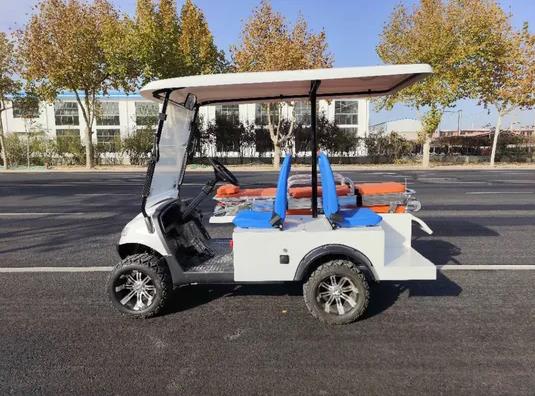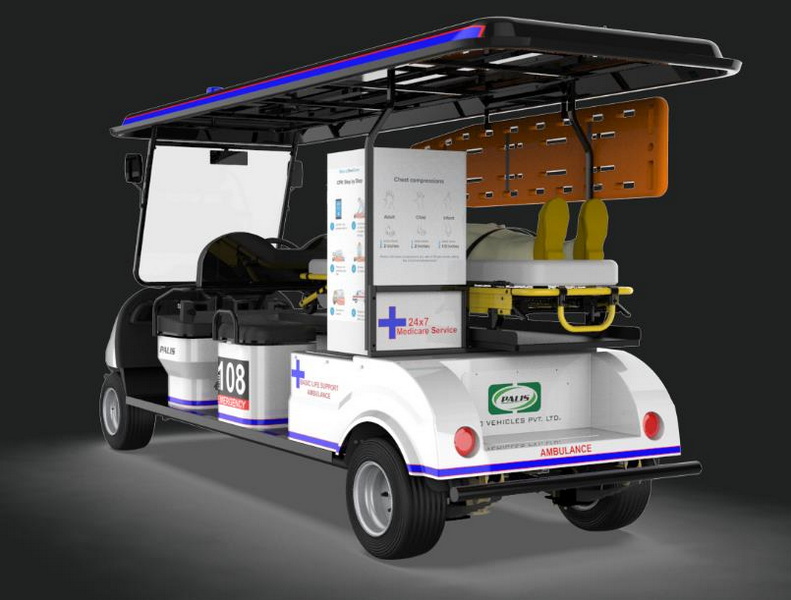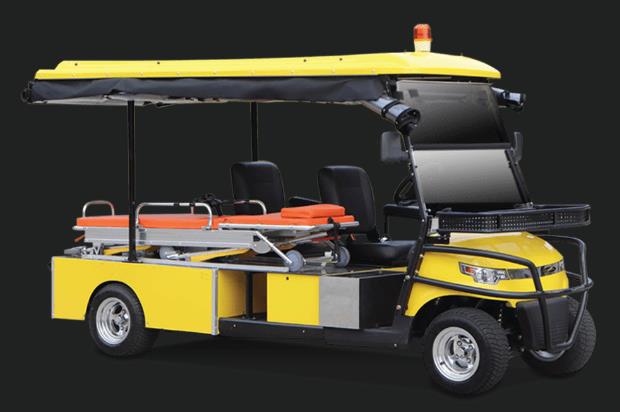Content Menu
● Introduction to Private Label Electric Ambulance Carts
>> Key Features of Private Label Electric Ambulance Carts
● Benefits of Private Label Electric Ambulance Carts
>> Environmental Benefits
>> Cost-Effectiveness
>> Enhanced Patient Comfort
>> Customization and Flexibility
● Examples of Private Label Electric Ambulance Carts
>> 2-Seater Electric Ambulance Buggy
>> Custom Electric Golf Ambulance Cart
>> Integration with Existing Healthcare Systems
● Future Developments and Challenges
● Conclusion
● FAQs
>> 1. What are the primary benefits of using private label electric ambulance carts?
>> 2. How do private label electric ambulance carts contribute to sustainability?
>> 3. What safety features are typically included in private label electric ambulance carts?
>> 4. How do private label electric ambulance carts enhance patient comfort?
>> 5. What are some common challenges faced by electric ambulance carts?
In recent years, the healthcare industry has seen a significant shift towards more sustainable and efficient solutions, particularly in emergency medical services (EMS). One of the key innovations in this field is the Private Label Electric Ambulance Cart, designed to provide a reliable, eco-friendly, and cost-effective alternative to traditional ambulances for various medical transport needs. This article will delve into the features, benefits, and what sets these carts apart from other options available in the market.

Introduction to Private Label Electric Ambulance Carts
Private Label Electric Ambulance Carts are specialized vehicles designed for transporting patients within hospitals, campuses, or even in community settings. They are often customized with specific medical equipment and safety features to meet the needs of healthcare providers. These carts are not only environmentally friendly but also offer a quieter and more comfortable experience for patients compared to traditional ambulances.
Key Features of Private Label Electric Ambulance Carts
1. Customization: One of the standout features of private label electric ambulance carts is their ability to be customized. Healthcare providers can specify the type of medical equipment needed, such as defibrillators, oxygen tanks, and first aid supplies, ensuring that the cart is tailored to their specific emergency service requirements.
2. Safety Features: These carts are equipped with advanced safety features like secure side rails, anti-collision sensors, and emergency stop buttons. They also include communication devices such as two-way radios and GPS for efficient coordination with dispatch centers.
3. All-Terrain Capability: Many models are designed with good all-terrain capability, making them suitable for use in various environments, from hospital grounds to parks and golf courses. The quality of tires and suspension systems plays a crucial role in this aspect.
4. Battery Life and Charging: Private label electric ambulance carts often come with long battery life and fast charging capabilities. This ensures continuous operation during emergency situations without frequent recharging, which is crucial for maintaining readiness.
5. Environmental Sustainability: By using electric power, these carts contribute to reducing air pollution and carbon emissions, aligning with global efforts towards sustainability.

Benefits of Private Label Electric Ambulance Carts
Environmental Benefits
Electric ambulance carts help decrease air pollution, especially in urban areas where hospital traffic is frequent. This not only improves local air quality but also contributes to the global fight against climate change. The reduction in noise pollution is another significant advantage, as it creates a more peaceful environment for both patients and hospital staff.
Cost-Effectiveness
While the initial purchase price of an electric ambulance cart may be higher, the long-term savings are significant. Operational costs are lower due to reduced fuel consumption, and maintenance costs are also decreased because electric vehicles have fewer moving parts. This makes them a cost-effective option for healthcare facilities looking to optimize their budgets.
Enhanced Patient Comfort
The quieter operation of electric ambulance carts creates a more comfortable environment for patients during transport. This is particularly beneficial for critical patients who require a calm and quiet environment. Additionally, these carts often have smoother acceleration and deceleration, reducing the risk of jolts or sudden movements that might cause discomfort.
Customization and Flexibility
These carts can be customized to fit different healthcare settings and needs. Whether it's for a hospital campus or a community event, private label electric ambulance carts offer flexibility in design and functionality. This customization allows healthcare providers to ensure that their emergency response vehicles are equipped with the necessary tools and equipment to handle a variety of medical situations.
Examples of Private Label Electric Ambulance Carts
2-Seater Electric Ambulance Buggy
The 2-seater electric ambulance buggy is an example of a specialized vehicle designed for efficient patient transport within hospital grounds. It features a durable stretcher bed, essential first aid kits, and a reliable AC motor for smooth operation. This model is ideal for short-distance transports and can be easily maneuvered through crowded hospital corridors.
Custom Electric Golf Ambulance Cart
Another example is the Custom Electric Golf Ambulance Cart, which offers a passenger capacity of 2+1 and a range of over 100 km on a single charge. It is equipped with advanced AC systems and lithium-ion batteries, making it suitable for various medical transport needs, including community events and outdoor festivals.
Integration with Existing Healthcare Systems
Private label electric ambulance carts can be seamlessly integrated into existing healthcare systems. They can be equipped with communication systems that allow real-time updates with dispatch centers, ensuring efficient coordination and response times. This integration also facilitates better patient data management, as medical records can be accessed and updated during transport.
Future Developments and Challenges
As technology continues to evolve, we can expect to see further advancements in private label electric ambulance carts. Improvements in battery technology will likely increase their range and reduce charging times, making them even more practical for widespread use. However, challenges such as limited charging infrastructure and higher initial costs remain. Addressing these challenges will be crucial for the widespread adoption of these vehicles.
Conclusion
Private label electric ambulance carts are revolutionizing the way healthcare providers approach emergency medical transport. With their customizable features, environmental sustainability, cost-effectiveness, and enhanced patient comfort, these carts stand out as a superior choice for modern healthcare settings. As technology continues to advance, we can expect these vehicles to become an integral part of emergency medical services worldwide.

FAQs
1. What are the primary benefits of using private label electric ambulance carts?
- Environmental Sustainability: Reduced air pollution and carbon emissions.
- Cost-Effectiveness: Lower operational and maintenance costs.
- Customization: Ability to tailor the cart to specific medical needs.
- Patient Comfort: Quieter operation for a more comfortable transport experience.
2. How do private label electric ambulance carts contribute to sustainability?
Private label electric ambulance carts contribute to sustainability by reducing air pollution and carbon emissions, aligning with global efforts to combat climate change. They also promote a cleaner environment, which is beneficial for both patients and communities.
3. What safety features are typically included in private label electric ambulance carts?
Safety features often include secure side rails, anti-collision sensors, emergency stop buttons, seat belts, and communication devices like two-way radios and GPS.
4. How do private label electric ambulance carts enhance patient comfort?
These carts provide a quieter and more comfortable transport experience for patients. The reduced noise level is particularly beneficial for critical patients who require a calm environment during transport.
5. What are some common challenges faced by electric ambulance carts?
Common challenges include limited range, charging infrastructure limitations, higher initial costs, and battery lifespan issues. However, advancements in technology are addressing these concerns.










































